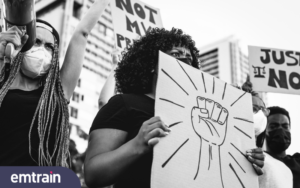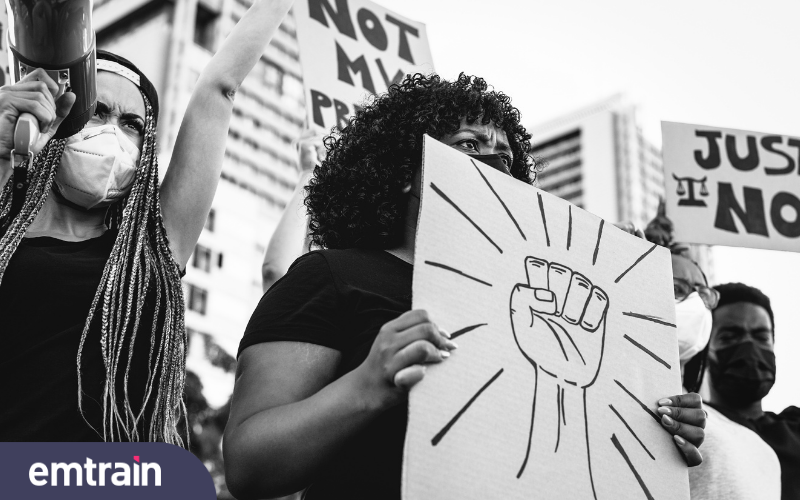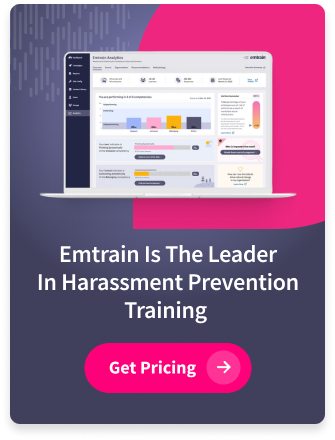We are living in a society that is at once rapidly changing and stubbornly rooted in a history in which differences in race, ethnicity, gender identity and expression, sexual orientation, and other characteristics define opportunities and shape experiences and outcomes for individuals and communities. This tension is continuously displayed and amplified by our growing dependence upon technology and social media that can both unite and divide us. With just one click, people can easily organize and bring massive attention to any issue! In these turbulent times, it is important to use current events to drive home in our teams and workforces Diversity, Equity, and Inclusion (DEI) using current events.
Approach Your Training Like a Brand Building Exercise
For equity, respect, and inclusion to weave into the fabric of the culture, it cannot just be a one-and-done exercise. For too long, many companies regarded training as a check the box requirement, which was trotted out once a year by a mid-level program manager. Sponsoring training in this way will certainly not integrate it into the social fabric of the workplace.
Suppose your organization approaches training like any other brand-building exercise. You deliberately try to create an emotional response within your audience with marketing and communications support. Your training can consistently reinforce that emotional response from various directions, such as executive messages, video lessons, and stories, to the point where every employee remembers those stories and lessons and how they apply to the workplace. That’s when you start integrating Diversity, Equity, and Inclusion (DEI) into the workplace culture.

Our current events give us a framework to inspire storytelling about equity, respect, and inclusion. We can intentionally take a current event, tell a story about it, and use that story to drive home a lesson for the workforce that they’ll remember. For example, our news headlines are dominated by stories of hate and violence against Asian Americans and African Americans. Rather than ignoring these events, employers can consider ways to acknowledge and join the discussion and make a learning lesson out of these events that advance equity, respect, and inclusion in the workforce. For example, employers can consider creative ways to deploy stories and short, video-based lessons (microlessons) regularly so they nudge behaviors throughout the year. When you’ve just heard a story about bias or disrespect, it’s more likely to influence your actions than a course you took 6 or 8 months ago. Just as your organization continuously engages in outreach to build brand awareness and loyalty among existing and potential customers or clients, it also can continuously reach inward to build similar awareness of its Diversity, Equity, and Inclusion (DEI) objectives among existing and potential employees.
Maximize the Impact of Training for Employees
Although it may seem obvious enough, one way to maximize the impact of training is to acknowledge and embrace impact as a goal of the training. If the objective of the training is to facilitate the building of a positive and meaningful organizational brand, it is important to make that objective known to the audience of learners. It is also important to keep in mind that compliance training should not be totally disconnected from social justice issues. Compliance training is a result of social justice issues. For example, the #MeToo movement gained momentum in 2017 and in 2018 and as a result, California, Connecticut, Maine, Maryland, New York, Illinois, and Washington have enacted sexual harassment training mandates for employers. The mandates have come into existence because of the social response to these issues. So, let’s not water down these social issues into a mindless activity for the sake of simply fulfilling a statutory requirement. Instead, employers should ensure whatever they are doing to meet the regulation is clearly connected to the social issues that led to the mandates, and that it is adequately teaching on the issue in a way that is relevant to the audience and which recognizes the complexity of the issues (and possible resistance to the training messages). Training should not just be about the “what” (or the “what not to do”), but also about the “why” and the “how.” If your organization or your industry has wrestled with certain issues, or fallen short on one or more objectives, it may be appropriate to acknowledge this fact, explain how the training is intended to support change, and how each member of the organization can contribute to the desired impact.
In addition, employers can proactively identify the common touchpoints for the employee experience and figure out a plan to integrate training and microlessons into a coherent cadence that blends with their work calendar. Keep in mind that not every touchpoint requires a full course. Some could be 1-2 microlessons that you send out on the employee communication app such as Slack or Microsoft Teams. The goal here is to map out a plan for how you’ll educate members of the workforce on best practices and then tailor that plan to flow with what employees are doing in each quarter. It may be necessary for each employee to participate in a 30 or 60-minute course on an annual basis to satisfy statutory mandates, but employers can amplify the impact of that training by consistently reinforcing key messages throughout the year.
Determining Which Stories To Tell
There are so many social issues in flux today. How should employers decide which ones to tell stories about and comment on with employees?
To begin, acknowledge that not all issues will be of equal relevance for every workforce. Select those issues that really apply to your current workforce composition and dynamics. When possible, allow opportunities for stories to be told directly by members of the workforce as it may be far more impactful to learn how an issue has impacted a co-worker or leader in the organization than to receive a message that is disconnected from the day-to-day experiences of an employee population. Depending upon the organization, it may be useful for employees to hear stories about addressing customer behavior that does not align with the company’s values if current events may prompt such behavior.
Companies have a unique opportunity to speak up and tell stories about current events in a way that helps foster a good discussion and learning. It’s good for society, it is good for employees, and it is good for the business since it can inspire internal trust in the corporate brand.








